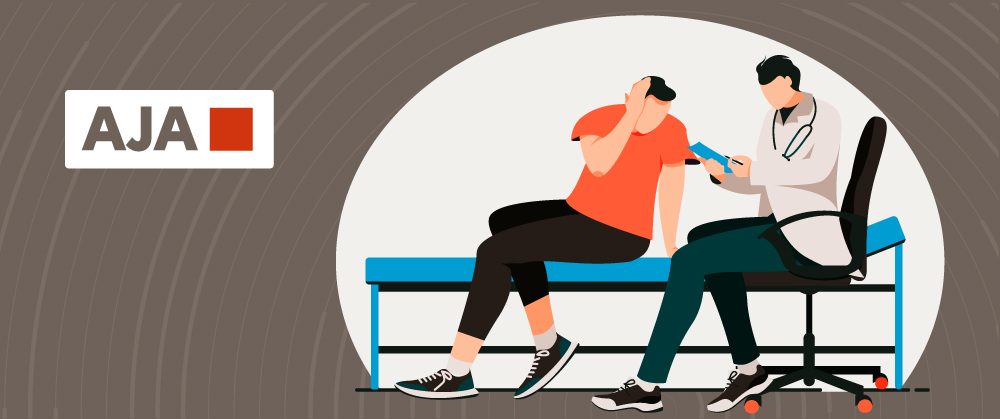When Americans lose vestibular function, they’re more likely to face physical injury, loss of autonomy, and chronic medical problems—including cognitive issues and depression. ASHA’s audiologists work on interdisciplinary teams to help diagnose and treat vestibular balance disorders.
The 10th Biennial National Center for Rehabilitative Auditory Research (NCRAR) Conference connected audiologists with students and other professionals to discuss the latest in vestibular science. Now, Conference Chair Dawn Konrad-Martin brings highlights from the conference to readers of the American Journal of Audiology (AJA) in the latest special issue of the journal.
Causes of Vestibular Disorders
The special issue opens with an introduction from Conference Co-Chairs Hullar and Peterka along with Konrad-Martin. The authors introduce the articles and describe the conference’s unique 3-day setup focusing on the causes, diagnosis, and treatment of vestibular disorders.
Two articles in the issue discuss causes of vestibular disfunction. First, Akin et al. report on the study of postconcussive dizziness in post-9/11 veterans, finding a number of factors that influence these symptoms. Later, Janky and Steyger review the effects of hospital-prescribed medications such as aminoglycoside on vestibular function.
Diagnosing Vestibular Disorders
Two articles focus on diagnosing vestibular disorders, including testing. When clinicians use evidence-based practice to diagnose vestibular disorders, they can ensure that these patients receive help as soon as possible.
Talian and colleagues provide clinicians and scientists with normative ranges for vestibular and balance tests for U.S. military servicemembers and veterans. Elsewhere in the issue, Gonzalez and colleagues report on the findings of their investigation into current tests of peoples’ vestibular perceptual threshold, finding that many thresholds are lower than the person thinks.
Treatment of Vestibular Disorders
The majority of articles in the special issue highlight new research in the treatment of vestibular disorders. Behr and Honaker present clinical considerations for treating persistent benign paroxysmal positional vertigo, stressing the importance of differential diagnosis to rule out other conditions. Next, Kirjava et al. provide audiologists with actionable guidance for providing inclusive, equitable care for clients who identify as lesbian, gay, bisexual, transgender, queer, and other identities (LGBTQ+).
Shah and colleagues show that unhurried consultations, coordinated care, and managed expectations were just as important as treatment outcomes for individuals with longstanding dizziness. Later, Benjamin et al. highlight recent developments in vestibular migraine research, noting that this increasingly recognized condition affects almost 3% of the U.S. population.
From Cause to Cure
We hope that this special issue helps you treat the millions of Americans with vestibular disorders across the country. We’d like to thank Dr. Konrad-Martin—along with the conference co-chairs, authors, and reviewers—for their work bringing this special issue to AJA readers.
You can read the entire special issue in AJA, or explore the individual articles below!
Explore the Special Issue
Akin, F. W., Swan, A. A., Kalvesmaki, A., Hall, C. D., Riska, K. M., Stressman, K. D., Nguyen, H., Amuan, M., & Pugh, M. J. (2023). Factors that impact the long-term outcome of postconcussive dizziness among post-9/11 veterans. American Journal of Audiology, 32(3S), 707–721. https://doi.org/10.1044/2023_AJA-22-00150
Behr, E., & Honaker, J. A. (2023). When particle repositioning maneuvers just will not stick: Clinical considerations for persistent benign paroxysmal positional vertigo. American Journal of Audiology, 32(3S), 675–683. https://doi.org/10.1044/2022_AJA-22-00118
Benjamin, T., Gardi, A., & Sharon, J. D. (2023). Recent developments in vestibular migraine: A narrative review. American Journal of Audiology, 32(3S), 740–746. https://doi.org/10.1044/2022_AJA-22-00120
Gonzalez, E. L.-C., King, S. A., & Karmali, F. (2023). Your vestibular thresholds may be lower than you think: Cognitive biases in vestibular psychophysics. American Journal of Audiology, 32(3S), 731–739. https://doi.org/10.1044/2023_AJA-22-00186
Hullar, T. E., Peterka, R. J., & Konrad-Martin, D. (2023). Vestibular disorders: From cause to cure. Proceedings from the 10th Biennial Conference of the National Center for Rehabilitative Auditory Research. American Journal of Audiology, 32(3S), 671–674. https://doi.org/10.1044/2023_AJA-23-00137
Janky, K., & Steyger, P. S. (2023). Mechanisms and impact of aminoglycoside-induced vestibular deficits. American Journal of Audiology, 32(3S), 747–761. https://doi.org/10.1044/2023_AJA-22-00199
Kirjava, S. A., Sladen, D. P., and DeBacker, J. R. (2023). Providing mindful and informed health care for patients who are LGBTQ+: Perspectives for clinical audiology. American Journal of Audiology, 32(3S), 684–694. https://doi.org/10.1044/2023_AJA-22-00112
Shah, M., Staab, J., Anderson, A., Eggers, S. D., Lohse, C., & McCaslin, D. L. (2023). Outcomes and patient experience in individuals with longstanding dizziness. American Journal of Audiology, 32(3S), 722–730. https://doi.org/10.1044/2023_AJA-22-00152
Talian, D. S., Eitel, M. M., Zion, D. J., Kuchinsky, S. E., French, L. M., Brickell, T. A., Lippa, S. M., Lange, R. T., & Brungart, D. S. (2023). Normative ranges for, and interrater reliability of, rotational vestibular and balance tests in U.S. military service members and veterans. American Journal of Audiology, 32(3S), 695–706. https://doi.org/10.1044/2022_AJA-22-00128









